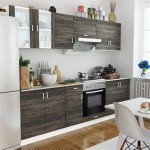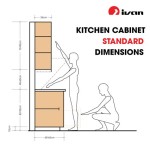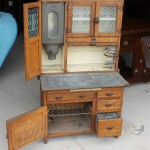How To Remove Kitchen Plinth
Kitchen plinths, also known as toe kicks, are the decorative boards that cover the gap between the floor and the bottom of base cabinets. Removing them might seem like a daunting task, but with the right approach, it can be accomplished with minimal effort. Whether replacing damaged plinths, accessing plumbing, or undertaking a deep clean, understanding the removal process is essential for a successful outcome.
The first step in removing a kitchen plinth involves identifying the fixing method. Commonly, plinths are secured using clips, screws, or a combination of both. Clips are the most prevalent method in modern kitchens, providing a streamlined appearance and easy access. Older kitchens might utilize screws, which are often concealed with plastic caps.
Locating the fixings is crucial before attempting removal. For clip-fixed plinths, carefully inspect the top edge of the plinth where it meets the cabinet. Small recesses or notches often indicate the presence of spring clips. If screws are used, look for concealed screw heads covered by plastic caps. These caps can typically be pried off with a small flat-head screwdriver or a putty knife.
Once the fixing method is identified, gather the necessary tools. For clip-fixed plinths, a flat-head screwdriver or a putty knife is usually sufficient. If screws are involved, a suitable screwdriver matching the screw head is required. A flashlight can also be helpful for illuminating dark corners and identifying fixings in shadowed areas. Having a small container to store screws and clips will help keep them organized and prevent loss.
With the tools assembled, the removal process can begin. For clip-fixed plinths, carefully insert the flat-head screwdriver or putty knife into the recess or notch near a clip. Gently apply pressure to release the clip's grip. Work your way along the plinth, releasing each clip in turn. Once all clips are disengaged, the plinth can be pulled away from the cabinet base. Avoid using excessive force, which could damage the plinth or the cabinet.
If the plinth is secured with screws, use the appropriate screwdriver to remove them. Once all screws are removed, the plinth can be detached. Keep track of the screws for reinstallation or replacement. In some cases, a combination of clips and screws might be used. Remove the screws first, then proceed with releasing the clips as described above.
In situations where the plinth seems stubbornly fixed despite identifying and releasing all visible fixings, it's possible that adhesive or sealant was used during installation. A thin, flexible putty knife can be used to carefully separate the plinth from the cabinet base. Apply gentle pressure and work slowly to avoid damaging the surfaces. If significant resistance is encountered, it's advisable to seek professional assistance to prevent unintended damage.
After removing the plinth, take the opportunity to clean the area behind it. Dust, debris, and even pests can accumulate in this hidden space. A vacuum cleaner with a crevice attachment is ideal for removing loose particles. A damp cloth can be used to wipe down the surfaces of the cabinet base and the back of the plinth. Allow the area to dry thoroughly before reinstalling the plinth or installing a new one.
When reinstalling a plinth, ensure all clips are properly engaged or screws are securely fastened. For clip-fixed plinths, align the clips with the corresponding recesses on the cabinet base and push the plinth firmly into place until the clips snap shut. For screw-fixed plinths, align the screw holes and tighten the screws evenly to avoid warping the plinth. Replace any plastic caps that were removed.
Understanding the different fixing methods and utilizing the appropriate tools simplifies the plinth removal process. Careful execution and attention to detail will help prevent damage and ensure a successful outcome. Addressing any underlying issues, such as plumbing leaks or pest infestations, while the plinth is removed is highly recommended. Regular cleaning of the area behind the plinth can help maintain a hygienic kitchen environment.

Easiest Way To Remove A Kitchen Plinth Without Damaging It

Hod Plinth Removal Tool

Easiest Way To Remove A Kitchen Plinth Without Damaging It

How To Fit Kitchen Plinths Pelmets Cornices

Julian Cas S Diy Blog Archive Fitting Plinth How To What Use Where Buy

How To Scribe A Kitchen Plinth The Easy Way Shetland S Garden Tool Box

Fitting A Kitchen Plinth The Carpenter S Daughter

Kick Off How To Make The Most Of Kitchen Kickboards Houzz

Kick Off How To Make The Most Of Kitchen Kickboards Houzz

Smiths Ss3e 3kw Electric Kitchen Plinth Heater Under Cupboard Fan Heat Things
Related Posts








